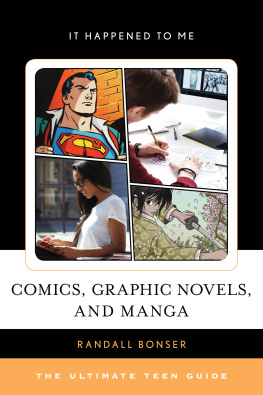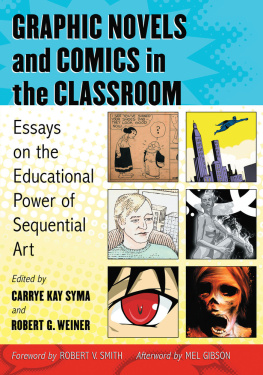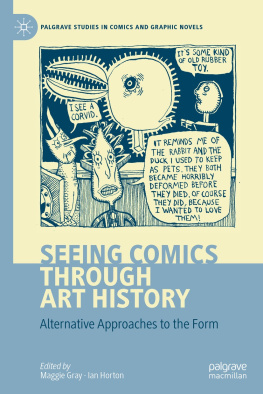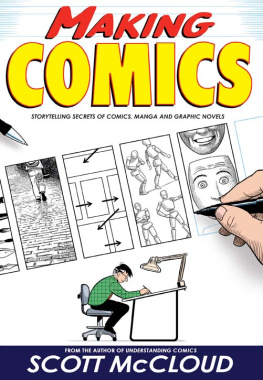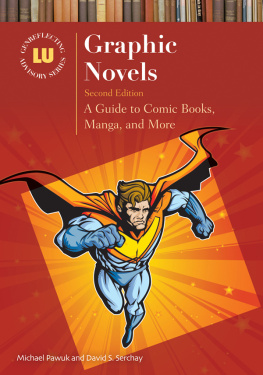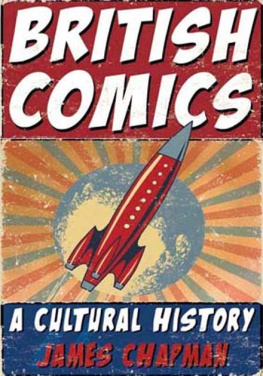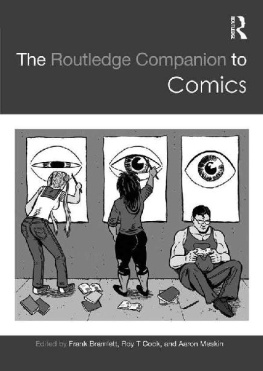A COMICS STUDIES READER
A COMICS STUDIES READER
EDITED BY JEET HEER AND KENT WORCESTER

www.upress.state.ms.us
The University Press of Mississippi is a member of the Association of American University Presses.
Copyright 2009 by University Press of Mississippi
All rights reserved
Manufactured in the United States of America
First printing 2009

Library of Congress Cataloging-in-Publication Data
A comics studies reader / edited by Jeet Heer and Kent Worcester.
p. cm.
Includes bibliographical references and index.
ISBN 978-1-60473-108-8 (cloth : alk. paper) ISBN 978-1-60473-109-5 (pbk. : alk. paper) 1. Comic books, strips, etc.History and criticism. I. Heer, Jeet. II. Worcester, Kent, 1959.C667 2008
741.569dc22
2008016893
British Library Cataloging-in-Publication Data available
CONTENTS
THIERRY GROENSTEEN
DAVID KUNZLE
ROBERT C. HARVEY
GILBERT SELDES
FREDRIC WERTHAM
AMY KISTE NYBERG
JOHN A. LENT
PETER COOGAN
M. THOMAS INGE
DAVID CARRIER
W. J. T. MITCHELL
THIERRY GROENSTEEN
CHARLES HATFIELD
JOSEPH WITEK
PASCAL LEFVRE
ROBERT S. PETERSEN
ROGER SABIN
MARTIN BARKER
ANNE RUBENSTEIN
BART BEATY
ADAM L. KERN
FUSAMI OGI
ARIEL DORFMAN
THOMAS ANDRAE
JOHN BENSON, DAVID KASAKOVE, ART SPIEGELMAN
GENE KANNENBERG, JR.
ANNALISA DI LIDDO
HILLARY CHUTE
ACKNOWLEDGMENTS
We would like to express our thanks and gratitude to our contributors, as well as to Nic Bannon, Walter Biggins, Eddie Campbell, Lawrence Klein, Guy Lawley, Dan Nadel, Ken Fisher, Donald Rooum, Art Spiegelman, and Chris Ware. We would like to give special thanks to Robin Ganev, Jennifer Scarlott, and Julia Worcester. This book is dedicated to Seetha Srinivasan.
INTRODUCTION
Over the past two decades, intelligent and informed writing about comics, hitherto an endeavor with a long but often marginal history at the periphery of scholarly and intellectual worlds, has flourished as never before. Both the quantity and quality of scholarly writing on comics has increased enormously. More importantly, there is a sufficient accumulation of well-crafted work to inspire a sense of shared purpose and momentum among comics-minded scholars, essayists, and critics. The study of comics has become a lively field of inquiry and is no longer merely a topic area.
The burgeoning of comics studies is testified to by a wide array of evidence: impressive new biographies and monographs; the construction of a scholarly infrastructure (archives, conferences, journals, listserv groups, and so on); greater theoretical ambition and sophistication; the internationalization of comics scholarship (facilitated by the web); the recovery of lost classics; and the growing audience for talks, books, and articles on the history, aesthetics, craft, and politics of comics. Scholars interested in comics enjoy access to an expanding range of reference works, specialized terminology, and research opportunities. While the best of the new comics scholarship is eclectic, in approach and foci, it consistently returns to certain core themes: the history and genealogy of comics, the inner workings of comics, the social significance of comics, and the close scrutiny and evaluation of comics. Not coincidently, these are the four themes we highlight in this book.
The rise of comics studies is concomitant with the increased status and awareness of comics as an expressive medium and as part of the historical record. This revaluation is testified to by the commercial and critical success of the graphic novel; the greater attention comics are receiving in museums, galleries, and libraries; and the growing interest in teaching comics in the classroom. A cohort of graphic novels, including Maus, Persepolis, Jimmy Corrigan, American Born Chinese, and Fun Home, have become standard items on college and university syllabi for courses on memoir, cultural history, postmodern literature, and area studies. The notion that comics are unworthy of serious investigation has given way to a widening curiosity about comics as artifacts, commodities, codes, devices, mirrors, polemics, puzzles, and pedagogical tools. Comics are no longer a byword for banality; they have captured the interest of growing numbers of scholars working across the humanities and historically oriented social sciences.
The study of comics has benefited from what our contributor W. J. T. Mitchell has termed the pictorial turn and an awakened interest in a broader range of visual articulation than has traditionally been embraced by the academy. The emergence of cultural studies in the postwar period opened up space for studying popular culture in general and comics in particular. The more recent near-canonization of specific works and cartoonists by critics and scholars has also helped legitimize comics studies. As a field concerned with a medium that simultaneously manufactures genre and facilitates self-expression, comics studies embraces both mass entertainment and the avant-garde. The phrase teaching comics itself has a dual connotation. An increasing number of faculty are integrating graphic literature into their existing courses. At the same time, more and more courses are being introduced on different aspects of comics. While the present collection is designed for use in courses on comics, it is also aimed at readers who are curious about where comics sit in relation to other kinds of materials that might usefully be assigned in art history, communication arts, design, history, literature, political science, and sociology.
The burgeoning of comics scholarship is an exciting and much belated development. If we accept the emerging consensus that Rodolphe Tpffers work from the 1830s and 1840s provides a paradigmatic example of the form, comics have been around for well over 150 years. Over the intervening decades there has been an outpouring of writing about comics, starting with Tpffers meditations on his craft. Yet much of this literature, while filled with insights that warrant revisiting, is improvised and impressionistic in its approach. Some of it is deeply polemical. The emergence of a research-driven scholarly corpus, informed by the regular exchange of ideas, information, and findings, is a relatively recent occurrence. By contrast, the secondary literature on film, a younger art form, has been from the early twentieth century onwards much larger, more systematic, and more culturally respectable and prominent.
Given the energy and ferment of contemporary writing on comics, this strikes us an ideal moment to step back and survey the terrain. Our anthology is intended as a starting point for defining comics studies as well as a springboard for further investigation. The book features twenty-eight noteworthy contributions to an expanding and intrinsically interdisciplinary field. It is aimed at students, faculty, curators, librarians, and general readers. Our interest is in addressing readers who are engaged by comics of all kinds and from multiple vantage points, whether as product, construct, language, argument, or aesthetic.
Next page

